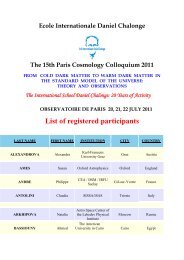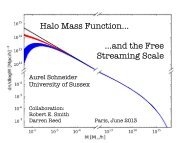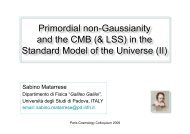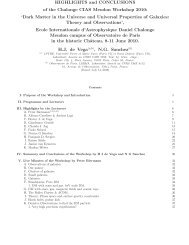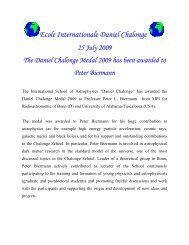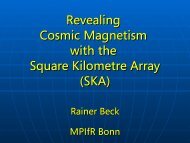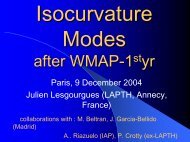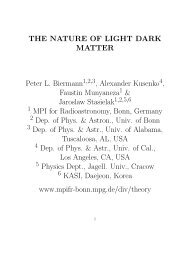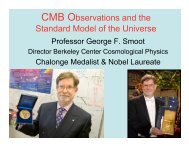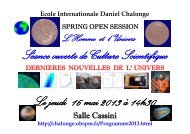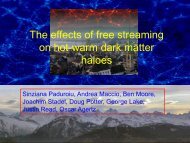Create successful ePaper yourself
Turn your PDF publications into a flip-book with our unique Google optimized e-Paper software.
massive black holes: they possibly formed out of agglomerating<br />
massive stars, in the gravitational potential well<br />
of the first DM clumps, whose mass in turn is determined<br />
by the properties of the DM particle (weakly degenerate<br />
Fermion galaxy cores). The supermassive star gives rise<br />
to a large HII region, possibly dominating the Thomson<br />
depth observed by WMAP. This black hole formation can<br />
be thought of as leading to a highly energetic supernova<br />
remnant, a Hyper Nova Remnant (HNR). Black holes in<br />
turn also merge, but in this manner start their mergers<br />
at masses of a few million solar masses, about ten percent<br />
of the baryonic mass inside the initial dark matter<br />
clumps, and at a fraction of 10−4.5 of the baryonic mass<br />
in their sphere of influence to the next such black hole.<br />
This readily explains the supermassive black hole mass<br />
function (Caramete & Biermann 2010). The action of the<br />
formation of the first super-massive black holes allows a<br />
33



